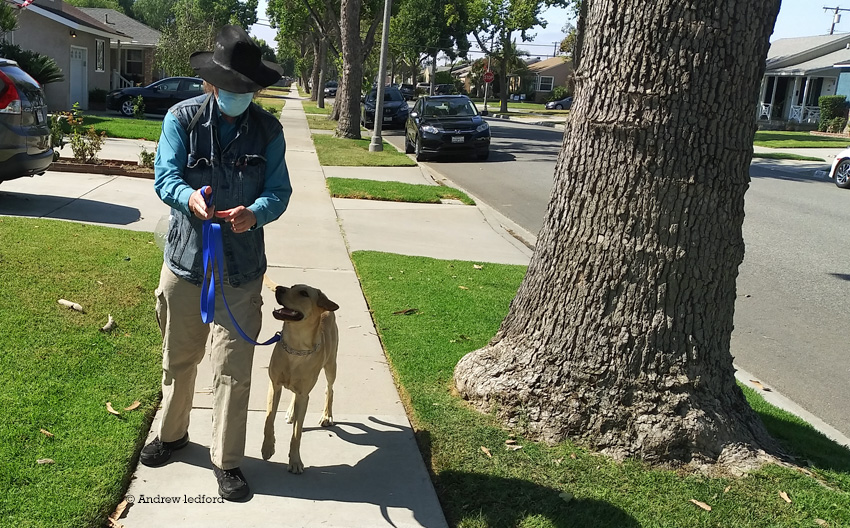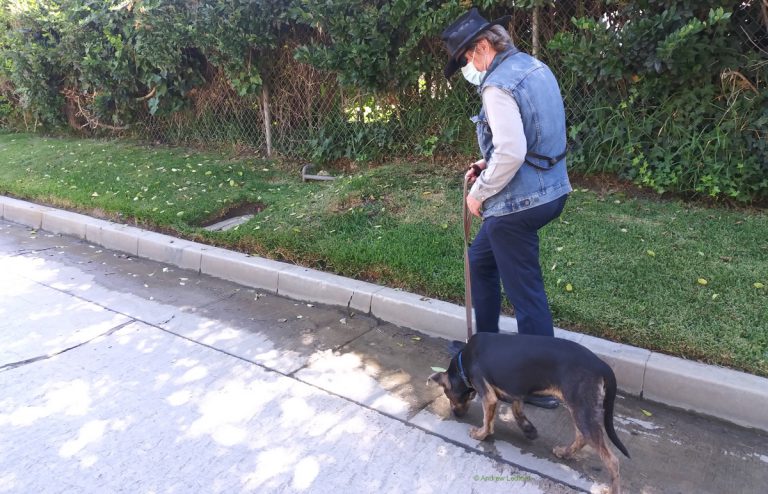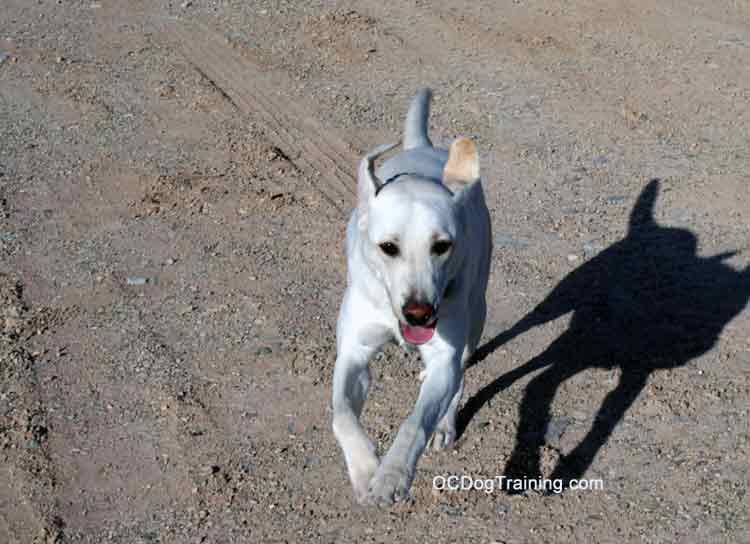Benefits of a Dog Training Plan
The reason for a dog training plan is so you know what to do the moment it needs to be done.
All successful people know planning and goal setting is important in many areas of life. One benefit of a well-designed dog training plan is getting the dog trained more quickly. Another benefit of a plan is, it helps the owner avoid accidentally teaching undesirable behavior patterns.
Planning is one of the steps that moves us towards our goals. A training plan allows us to perform the appropriate behavior when an opportunity presents itself.
Without a dog training plan, responses to misbehavior are often too late and ineffective. Without a plan, each time the dog misbehaves you need to figure out a new response or fall back on what may be inefficient handling. Not handling the dog properly can reward and increase undesirable behavior and decrease the goal or target behavior.

A dog training plan will also keep you in a training program long enough for the techniques to be effective. Time and the number of rewarded trials along with the criteria needed to receive rewards are variables contributing to the strength of behavior. A dog training action plan leads to dog friendly training and less stress for the human.
A dog training action plan functions as a prompt for the humans. These prompts guide us to take the most efficient as well as appropriate action. When we first start a new endeavor we often don’t have enough experience to know what actions to take.
Often the natural response of humans to a dog’s undesirable behavior is one that elicits or conditions behavior people don’t want.
One of the tasks of an experienced teacher, instructor, or coach is to teach us what we need to do and when we need to do it. I know this is true in many fields including dog training.
It seems everyone has an opinion and advice on how to train a dog. I often arrive at a person’s home to find they’ve tried four or five training suggestions from friends and family members. On top of friendly advice we now have television advice and the internet too.
Not only is there a lot of free advice, but a lot of it is contradicting. One person will say you’re not human if you do one training technique. Next you are told by another that you have to do that same technique to be a good dog owner. What is a person to do? What is a person to believe?
To separate the chaff from the wheat it’s helpful to get advice from a well-rounded professional. However, some professionals are better at harvesting the meaty kernels of truth better than others. Dog training is an interesting blend of tradition, myth, and science. I happen to be one of those who doesn’t condemn many training systems. I do have reservations about some styles, but I acknowledge their functionality. Even if the functionality is only a good narrative.
I believe dog training can teach us a lot more than just how to control our dogs.
My observations and insights have put me in an interesting situation. I know what can be done and what needs to be done to help owners. However, I also understand the limitations of the dog’s environment. Often a household’s dynamics is a limiting factor on how well the training will work.
When I find circumstances within the household’s dynamics that restrict or hold back the training I’ll work to find a solution. The solution often entails creating a custom plan that will work for that owner/family. This may include those who interact with the dog on a regular basis.
The training plan should set up rules that replace random emotion based punishment and knee jerk reactions with a very measured and well planned response.
To avoid using conflicting training techniques and commands you need to plan your dog’s training.
The question is, how will you respond when ______________ happens?
Having a well-defined plan gives us easy to implement steps toward our goals. A dog training plan allows us to perform the appropriate behavior when an opportunity presents itself.
One part of a training plan is having the right tools available at the right time. Is there a leash available when needed? Are food rewards within reach at locations where they’re regularly needed?
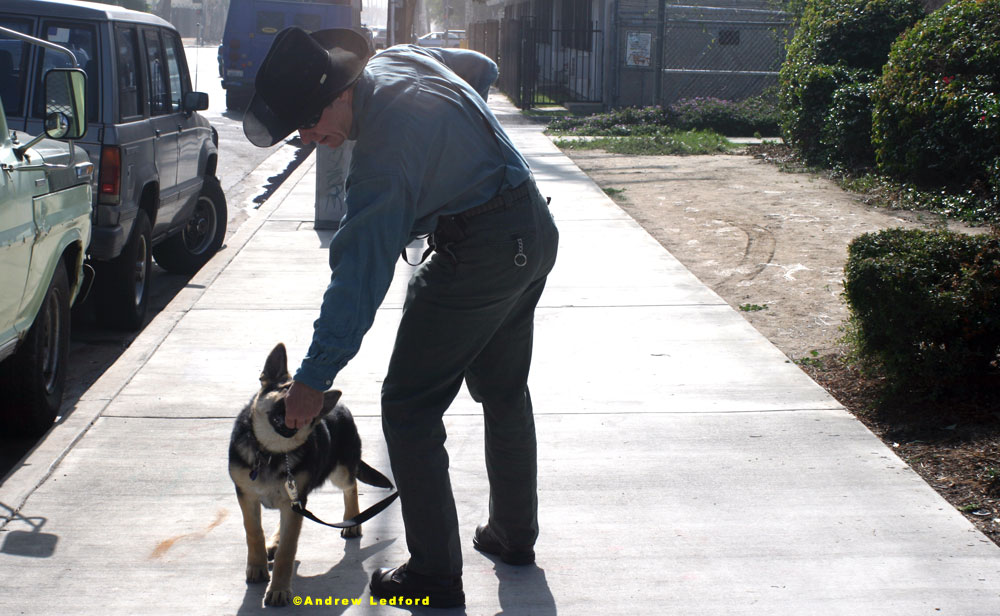
Sometimes a training plan may be just having the right tools available at the right time. When working with their dogs, owners often don’t have food rewards available when rewards are most needed.
When and where are the places that food is most often needed? I’ve found the main areas for me are doorways and the main living areas. In my house I always have food by the front door, back door, and my desk.
If I have food rewards available when they’re needed, what’s most likely to happen?
When food rewards are available it’s more likely the dog will be rewarded for desired behavior.
By having food handy I have made plans to use it.
“Making plans and calculating their outcome distinguishes rules of progression as a separate definable part of a history.”
Andrew Ledford © 2000 –2009
Planning involves more than just dog training techniques. Before visiting a new client’s house, I look on Google Maps to evaluate the neighborhood. I want to see if geography will influence the training program. In addition I’m evaluating the risk factors of the location.
Once I meet the dog and talk with the owners I will form a rough training plan as well as a lesson plan for that day and the following week(s.) During the first lesson I develop an idea of how I would like the training to progress.
When working with a dog we may find circumstances that require the training plan be altered. The plan needs to be flexible enough to adapt to the environment and personality traits of the individual dog.
Knowing what can be done is a lot different than knowing what is likely to be done. What can be done and what most people do are two different things. If the plan goes smoothly, then the dog’s behavior will begin to reinforce the family’s increased use of good handling techniques and reinforcement. When people realize that proper handling and well timed reinforcement is less work than ineffective forms of control they choose to continue implementing the plan.
The point is there’s often a method behind a plan. Using a method implies that there is a system at work. A system with inputs and outputs leading to the desired behavior.
Over the years I have developed a step by step method for people to follow. My system is flexible enough so the order, and within certain boundaries, how the training exercises are taught can vary.
There are several elements to a dog training plan. One of the first things we need to consider is what we want to accomplish. What is the target or goal?
What does the trained dog look like?
One of the goals of dog training is to take the dog from Becoming a well behaved dog to Being a trained and well behaved dog.
The question of how to go from becoming to being is older than our oldest literature and is one of the themes in the Epic of Gilgamesh.
It’s helpful if we know what’s needed to get from the start or becoming phase to the goal phase of being. Sometimes it’s not as direct as one would think.
We also need to develop good handling skills. Good handling skills are where humans need to be trained. Often one needs to respond without spending time thinking about a response, fumbling with the leash, or over handling the dog.
Whenever learning or teaching a psychomotor skill, such as dog training, we must keep in mind there are different strategies for Self-paced and Externally paced skills.
- Self-paced drills are where the individual controls the pace of performing the behavior.
- Externally paced skills are where others or the environment controls the pace of the behavior.
- Anticipatory strategies can make what appear to be externally paced performances act like self-paced drills.
Another part of a dog training plan is the weekly training schedule, which is made of individual lesson plans. Built into the lesson plans are gradual approximations that lead us to the target behavior. These Incremental improvements ensure we’re building the proper foundation needed for the next stage. Each training session moves the dog/handler team towards the desired behavior.
All of these elements are encompassed in what I think of as seven points of reference.
Seven points of reference
- History
- Acceptance
- Rules of nature
- Cultural rules
- Personal rules
- Rules of progressive achievements
- Rules of one’s chosen pursuit (pet dog training)
Plan for Consistency.
How will you ensure you are consistently implementing your plan with quality responses?
You may want to start by establishing what commands you’ll use. Your dog training commands should be distinct and used for one behavior or class of behaviors.
An example is the “Sit” command used for assuming the sit position from either standing or laying down. Plan your training commands before you start practicing your training drills.
Plan for early success.
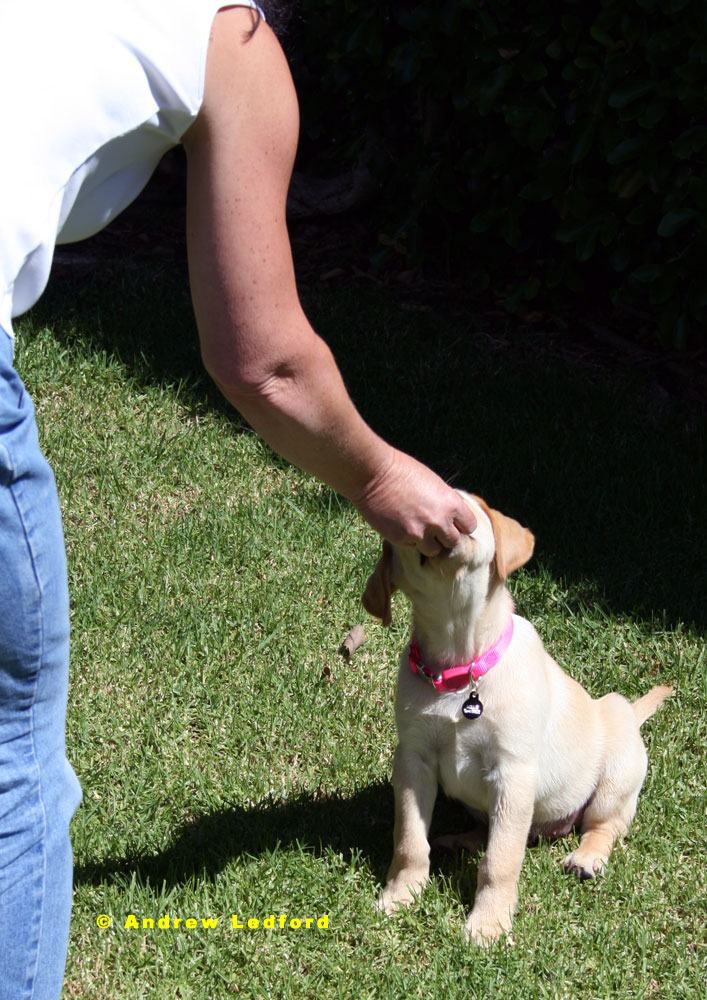
Make it easy for the dog to be successful in the beginning stages of the training. You may want to start training in the house or backyard. Once the dog is performing nicely in a low stress area, plan on how you will introduce more distracting conditions.
The idea is you want to gradually add easy to navigate chunks of complexity into the training sessions. While the distractions and novel stimuli will make the training a little more difficult, they should not be overwhelming. Usually you want to avoid having the dog struggle under excessive stress caused by being over a certain threshold.
Plan on how you will handle unexpected training challenges.
Sometimes we run into something that is unexpected and therefore not in the training plan. However, you can have a set of strategies for how you’ll overcome these unexpected challenges.
Three common scenarios when a training plan may need to be modified to overcome unforeseen training challenges.
- You can interrupt the planned lesson and focus on overcoming the problem area. A scenario may be where you are planning on working your dog along busy streets. But you discover the dog is fearful of traffic. Before you can comfortably follow your training plan you may need to first desensitize the dog to traffic.
- You can make a note and plan to work on the problem in a future training session. It’s often the case that dogs do well when being trained away from the house but pull and strain on the leash to get home. When dogs are staying with me I make a mental note of this and spend at least one training session a day working on leash manners when returning home. I do this until the dog is walking nicely all the time, even when it’s excited to get home.
- Sometimes all you need to do is focus on the problem for a short period of time and incorporate overcoming the problem area into your standard workflow or lesson plan. A good example of this is accustoming the dog to walk over short stretches of novel surfaces or encountering novel visual stimuli. This is similar to the first one, but the training doesn’t need to stop until you work through the issue. Many novice handlers don’t notice these problems or ignore them.
A well designed training program will incorporate a prompting strategy for both the dog and handler. Planning, prompts into the training can help get the appropriate behavior at the right time. Usually there needs to be at least some planning and/or training for prompts to be most effective.
Prompts help keep behavior on course when the instructor is not present. Prompts also supplement experience or having enough reinforced trials of a behavior.
When using a lot of prompts in a training program, have a plan for when and how you’ll fade the prompts.
Through drilled behavior the dog and handler will also acquire new problem solving strategies. Usually the beginning stage of a training program is done using a lot of drills. The drills also allow the behavior to be more easily prompted.
Both the dog and handler go through several stages of skill acquisition as they progress through a training program. Your dog training plan will help you and your dog work through a becoming to being competency model. A competency model shows how a learner goes from Unconscious incompetence to Unconscious competence.
While I’ve used my own competency model for many years, if you’re interested in this theory I suggest looking at Noel Burch’s “four stages of competence.” In the 1970s Noel Burch taught this as the “Four Stages for Learning Any New Skill.” A system that more closely mirrors my theory of skill acquisition is Fitts’ (1954) model of skill acquisition that involves the cognitive stage, the associative stage, and the autonomous stage.
How do you know an abstract technique will work? Inventing and/or adopting a new training technique or curriculum often revolves around experience and pattern recognition. In the evaluation stage we need to combine our good judgment with what Edwards Deming advocated as the Plan-Do-Study-Act cycle.
One problem with the Plan-Do-Study-Act cycle in dog training is people sometimes don’t gather enough data to know if what they’re doing is effective or not. If you take some baseline data before you start training and notice over two weeks that you’re moving away from your target behavior you can be fairly sure what you’re doing isn’t working too well.
For teaching a dog to walk on a loose leash a more antidotal approach would be if you notice that you’re becoming more fatigued or your body aches more after walking the dog. This could be your body telling you the dog is pulling more, not less.
If a training technique isn’t working you need to uncover, why? Is it the technique or the environment that’s at fault?
Another situation we need to consider is that the human’s behavior often undergoes extinction before the dog’s does. Without a plan, the human is more likely to quit training before the dog quits the undesirable behavior.
Time is a variable in itself. Time and an individual’s history need to be taken into consideration when determining, if and when, a training technique will be effective.
I have deviated a little from simple training drills to give you some insight into developing an effective dog training plan as well as the elements that go into it. In addition you’ll also now have a way to evaluate if your plan is effective.
Once you have a plan you need to take action. Many times we find that execution of the plan is more difficult than we thought it would be. Without action the plan is but a dream.
The training I do is a mixed or balanced training style with an emphasis on positive reinforcement. I make bad dogs good and good dogs great with an approach that is human friendly.
Wishing you the very best in dog training and I life,
Andrew Ledford
I can be reached at 714-827-4058

